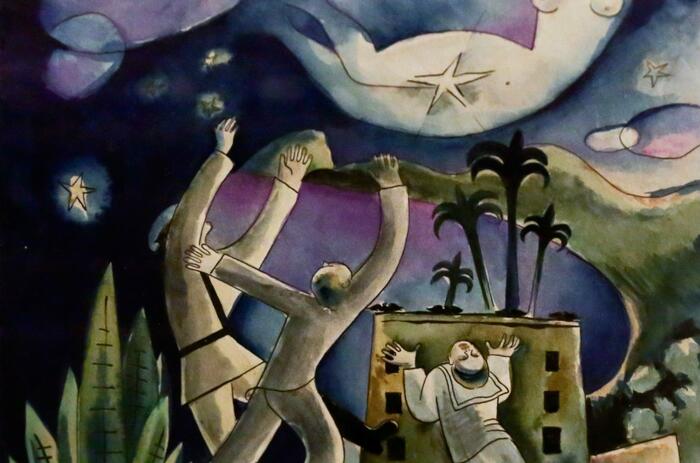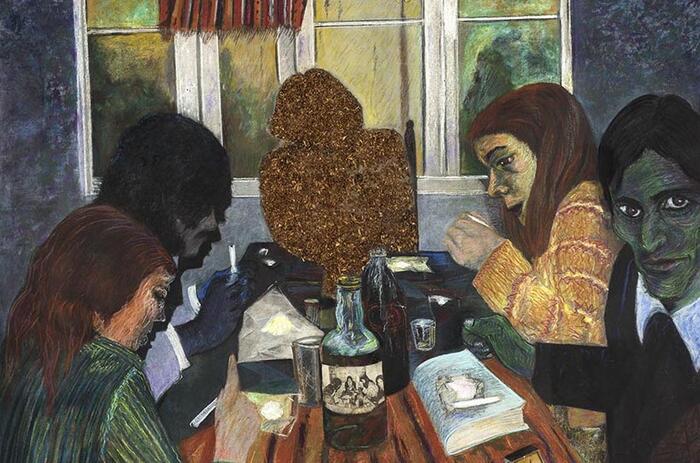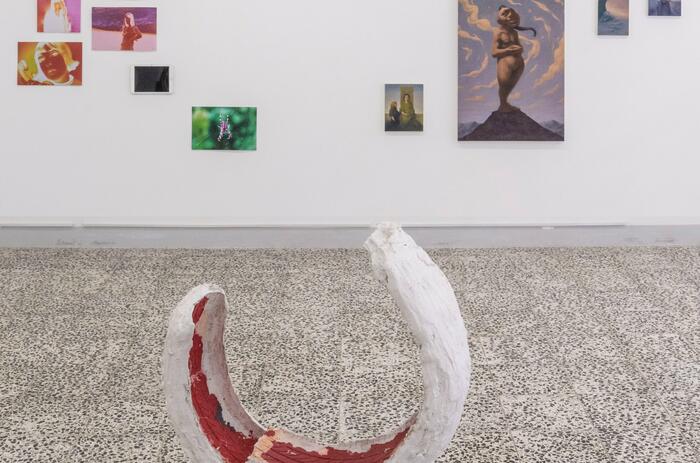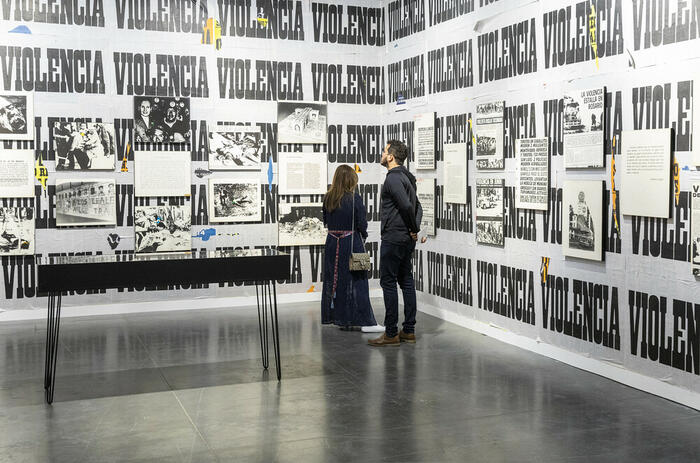DEAD TREE IN THE FRONT YARD
The Thyssen-Bornemisza National Museum (Madrid, Spain) contains the world view of the American people. Almost four centuries of American painting are on display in rooms 46 to 55 on the first floor of the museum. To name but a few names: Peale, Cole, Heade, Church, Hopper, Burchfield, Shahn, Rothko, de Kooning, Pollock, Estes... Probably the most complete collection of American art in Europe, and a must-see exhibition for anyone who wants to understand the history and thougt of the Western country.
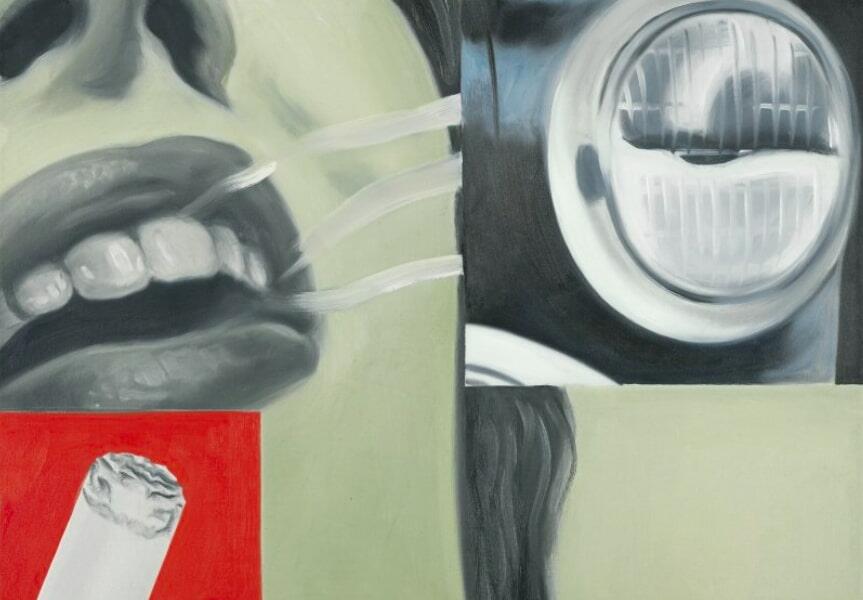
Charles Baudelaire wrote of the modern artist: "He has sought everywhere the passing, fleeting beauty of the present life (...) Often strange, violent, excessive, but always poetic, he has been able to concentrate in his drawings the bitter or intoxicating taste of the wine of Life". The 140 paintings that make up Arte americano en la colección Thyssen (American Art In The Thyssen Collection) embodies this characteristic. The heartbeat of each stage of American history is fully represented in the evolution of its painting: in the painters' imaginary, in the ways in which the generalised vision of the American world is captured on their canvases. Two antagonistic but illustrative examples are the artworks of Thomas Cole (1801-1848), in which nature is tinged with a certain divine sublimity, and those of Ben Shahn (1898-1969), a social gaze that places the big city, public space and leisure as settings conducive to observing class differences.
Perhaps the most remarkable aspect of the exhibition (beyond its pictorial value, which is obvious) lies in the clear transformation of the American subject. A subject that begins with the contemplation of nature as a metaphysical path, deeply influenced by European Romanticism and American Transcendentalism. This is followed by a perspective of the city from socialist realism to the various manifestations of the self, which include abstract expressionism and gestural painting, culminating in the pop art of Roy Lichtenstein and the photo-realism of Richard Estes.
Having said that, and assuming that we are talking about the United States, the exhibition also appeals (whether we like it or not) to Europe and certain artistic circles in Latin America, putting aside specifically Latin American characteristics. If we look at the exhibition chronologically, it is interesting to note how, during the 18th, 19th and well into the 20th centuries American painting looked to Europe. It was after the WWII, when the world was in dispute between the USSR and the USA, that the influence changed direction. Artists such as De Kooning, Still, Rothko, Kline and Pollock were at the forefront of the shift. "The new painting was expressive, heroic, but, above all, it was genuinely American", says Paloma Alarcó in one of the texts addressing the exhibition. From this point in history, Western art suffers or enjoys (depending on who observes it) an Americanisation. And this extends to culture in a broad sense: Paris is no longer Paris and New York is the new navel of the world.
With the new American painting, naturalism and luminism were left behind. Gone are the sublime and patriotic expressions whose ideas and outlook were central to the formation of the United States. Gone is a view of nature, albeit a gentrified one, capable of launching us towards certain metaphysical stages. Progress is expanding unchecked, swiftly across the length and breadth of the country. With it the cities and metropolitan areas, trying to cope with the demographic explosion, the face of horror in our days, as Luis Buñuel said. Therefore, exuberant nature is reduced and domesticated. A process that does not go unnoticed in painting.
Dead Tree and Side of Lombard House
Edward Hopper devoted virtually all his work to the loneliness and rootlessness of modern American life. Dead Tree and Side of Lombard House (1931) however seems to go even further. Rather, Hopper includes the natural environment and shows, in a premonitory manner, the new relationship that cities and suburbs were beginning to establish with nature. An example of this is that, only a year later, Frank Lloyd Wirght presented his Brodacre City.
Hopper's watercolour, which shows the outline of a typical American suburban house. Green meadows stretch out like the sea under a gloomy sky and surround the house. And almost nothing else: a dry, dead tree and a power pole that balances the composition but obstructs the image. All exposed to Hopper’s so characteristic desolate light. The environment, subdued by the technique represented by this uncomfortable steel pole, turned into an urban space, is transformed into a wound. Nature becomes a convalescent body, incapable of elevating the artist. All that remains is to reduce oneself to this stark realism.
A necessary warning: Hopper's operation marks a turning point in the American worldview in at least one respect. But in his time it must have had the same effect as the buzzing of a fly. At the same epoch there were artists who still possessed a transcendental view of nature. Charles Burchfield (1893-1967), for example, who was also a good friend of Hopper's, portrayed the seasons in the forest and countryside with a vibrant mysticism. Three of his artworks, by the way, can be seen in the exhibition.
Baudelaire’s quoted text at the beginning has a final observation about the modern artist. The modern artist, worte the French poet, seeks to "extract the eternal from the transitory". The transformation of the American subject as manifested in American Art in the Thyssen Collection thus leaves a statement and a question echoing. The statement: Hopper, along with others, pointed to the ravages of progress, in a world that could still produce oeuvres like Burchfield's. The question: almost a century after Dead Tree and Side of Lombard House, what aspects of the eternal remain for Western societies in the 21st century?

